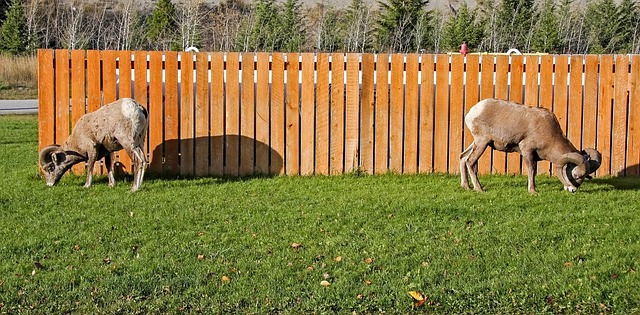How to fence a farm
When it comes to constructing a farm fence, you should be aware of the advantages and disadvantages of various fencing materials such as wood, electric, steel, and wrought iron. Some of these alternatives are long-lasting, while others are cost-effective. Others are adaptable and simple to set up. Each variety has its own set of drawbacks: some are costly, others are prone to rust, and others necessitate regular maintenance. Fences can be used to protect or divide land, to improve its look, to confine or exclude animals. A fence should be well-planned for whatever purpose it serves. This is especially essential on farms, where fences are a significant investment and their placement and layout may have considerable impact on output efficiency.
Material selection for fencing
- Wire tangles
- Woven wire fences are made up of several smooth horizontal wires separated by stays
- This style of fencing is available in a number of heights, so your choice is determined by the animals you’re raising and their jumping ability.
- Fencing made from mesh wire
- Mesh wire fences are more cost-effective than woven wire fences because they are more robust and reliable. They’re mostly utilized to enclose feedlots, corrals, and small crop land.
Farm fence design
Prepare a plan
All fence lines, lanes, corners, and gates should be marked on a map. Mark the future placement of these fence elements with lath, surveyor tape, bright paint, or a long tape measure.
Temporary versus permanent fencing
If you want to build a stronger barrier, temporary fencing is simple to install, move, and remove. Ready-to-use kits and temporary lines or wire are the two most common types of temporary fencing. The latter is strung up across posts and comes on a spool. Temporary fencing can be used to keep your animals safe from sinkholes, water sources, degraded areas, and trees within a permanently fenced-in enclosure.Bare wire, braided wire, or tape are commonly used for temporary fencing. Animals can easily tangle in or rip down these materials, hence they are usually electrified.
Woven wire, electric, vinyl, and wood rails are all options for permanent fencing. They’re better suited to long-term use. Temporary fencing materials such as tape or wire fencing, as well as PVC or wood rails, are used by some farmers to strengthen the barrier. You’ll need to concrete the posts into the ground if you choose permanent fencing. Because wood rail fencing uses nails, it requires more frequent upkeep.Permanent fencing not only makes it more difficult for your animals to escape, but it also makes it more difficult for wildlife to enter the enclosure.
Fence lanes and gates should be placed in strategic locations
Working facilities, livestock buildings, and water should all be connected to every potentially pastured field by your fencing lanes. Making lanes in the driest feasible regions, such as along a natural hill or terrace, is recommended.
Wire tangles
Several strands of galvanized steel wire are twisted together with two or four barbs to create a barbed wire fence. Standard barbed wire fences and suspended barbed wire fences are two different types of barbed wire fences.Barbed wire fences are low-cost and only require wire, fence posts, and staples for installation. They’re simple to construct and install.
Electric
If correctly constructed, electric fences are a safe, effective, and cost-efficient temporary or permanent fencing option. Animals can see polywire strands, which are more prevalent. Steel, aluminum, and high-tensile wire carry electricity better over longer distances and are less visible to livestock.
Line up your fences
Allow plenty of time to properly set out the fence lines. To avoid problems with neighbors or mistakes in placement, be sure you know where the property lines are. When setting out the fence’s path, stay away from rocky areas, harsh terrain, and high climbs. To prevent weed growth and erosion, restore vegetation once a fence line section has been levelled.
Brace assemblies for ends, corners, and gateposts
The key to a proper fence installation is bracing the end, corner, and gate posts. CCA pressure treated posts are the only ones that experts recommend. For the upright corner and end posts, bell-shaped concrete footings should be used. Always keep your back to the diagonal brace. Limiting tension loss and reducing the number of failures by increasing the diameter of every gate, end, and 90-degree corner posts to at least 8 inches. If your top member is horizontal, start assembling the brace cable at the base of all corner, gate, and end posts and work your way up.
N-braces, H-braces, and braces with a wood post on top are all examples of corner braces. Two horizontal braces, three vertical posts, and bracing wire were utilized to construct a corner brace that incorporates two H-braces back-to-back. This is a basic, long-lasting design that can withstand practically any fence.
Distance between the posts
Most fence posts can be placed 8 to 12 feet apart, according to a blog post by Red Brand, the most well-known brand of farm fence goods in the US. A 40-acre square pasture, for example, would require a mile of fencing. Posts should be spaced between 8 and 12 feet. Five steel T-posts to one wooden post is a good ratio for a durable structure. For an 8-foot spacing, you’ll need 660 posts. For a 12-foot spacing, though, you’ll need 440 posts. The difference is 220 posts, which is significant in terms of labor and material expenses.
Wire attachment
The first wire should be attached 8 to 10 inches above ground level. Temporary electric fences, board fences, and rail fences typically do not require this step.You’ll need to figure out how many strands you want for the next wires, especially if you’ve chosen a wire fence. A fence line normally requires four posts. Particularly in high-traffic regions, some farmers choose to erect five or six-wire fences.


